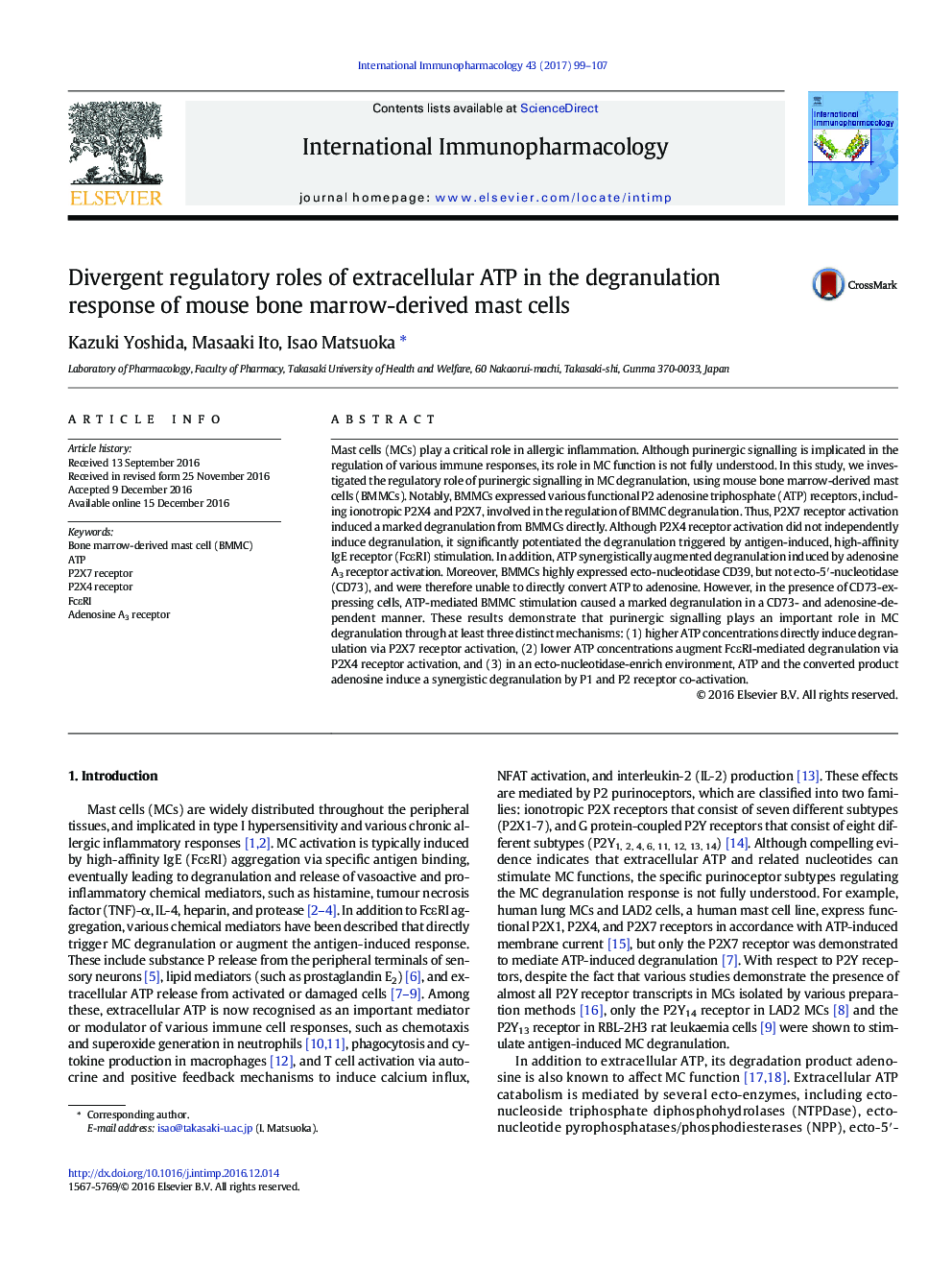| Article ID | Journal | Published Year | Pages | File Type |
|---|---|---|---|---|
| 5555371 | International Immunopharmacology | 2017 | 9 Pages |
â¢Roles of purinergic signalling in mast cell degranulation were examined.â¢P2X7 receptor activation directly induced mast cell degranulation.â¢ATP potentiated antigen-induced degranulation via P2X4 receptor activation.â¢ATP and its degradation product adenosine synergistically induced degranulation.â¢These purinergic regulations may be crucial for pathophysiological role of mast cells.
Mast cells (MCs) play a critical role in allergic inflammation. Although purinergic signalling is implicated in the regulation of various immune responses, its role in MC function is not fully understood. In this study, we investigated the regulatory role of purinergic signalling in MC degranulation, using mouse bone marrow-derived mast cells (BMMCs). Notably, BMMCs expressed various functional P2 adenosine triphosphate (ATP) receptors, including ionotropic P2X4 and P2X7, involved in the regulation of BMMC degranulation. Thus, P2X7 receptor activation induced a marked degranulation from BMMCs directly. Although P2X4 receptor activation did not independently induce degranulation, it significantly potentiated the degranulation triggered by antigen-induced, high-affinity IgE receptor (FcεRI) stimulation. In addition, ATP synergistically augmented degranulation induced by adenosine A3 receptor activation. Moreover, BMMCs highly expressed ecto-nucleotidase CD39, but not ecto-5â²-nucleotidase (CD73), and were therefore unable to directly convert ATP to adenosine. However, in the presence of CD73-expressing cells, ATP-mediated BMMC stimulation caused a marked degranulation in a CD73- and adenosine-dependent manner. These results demonstrate that purinergic signalling plays an important role in MC degranulation through at least three distinct mechanisms: (1) higher ATP concentrations directly induce degranulation via P2X7 receptor activation, (2) lower ATP concentrations augment FcεRI-mediated degranulation via P2X4 receptor activation, and (3) in an ecto-nucleotidase-enrich environment, ATP and the converted product adenosine induce a synergistic degranulation by P1 and P2 receptor co-activation.
